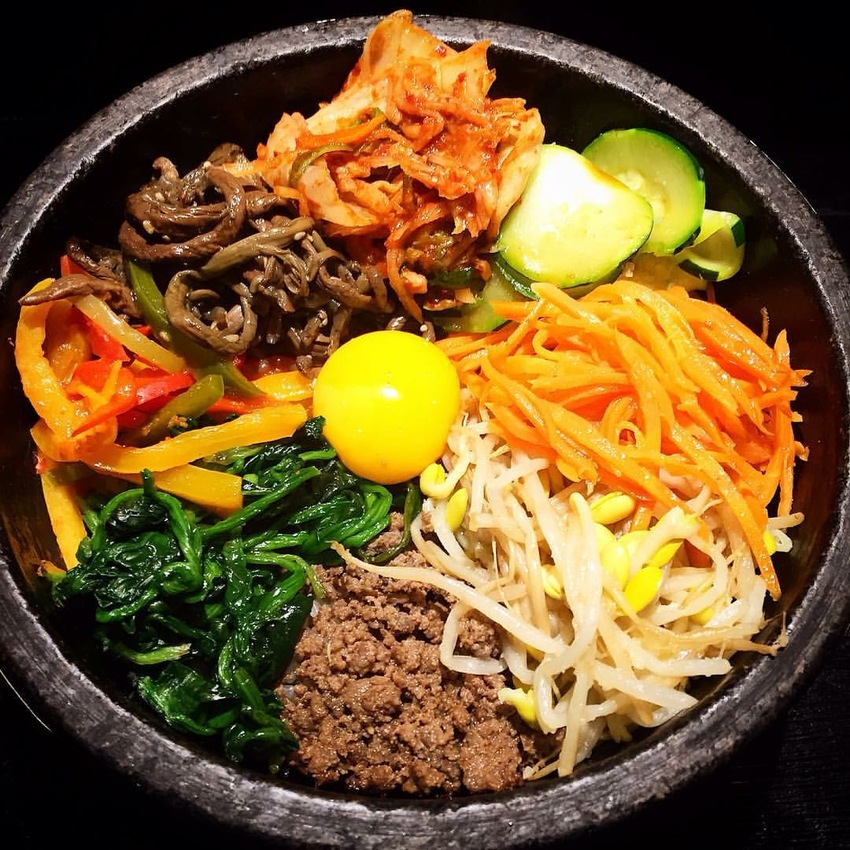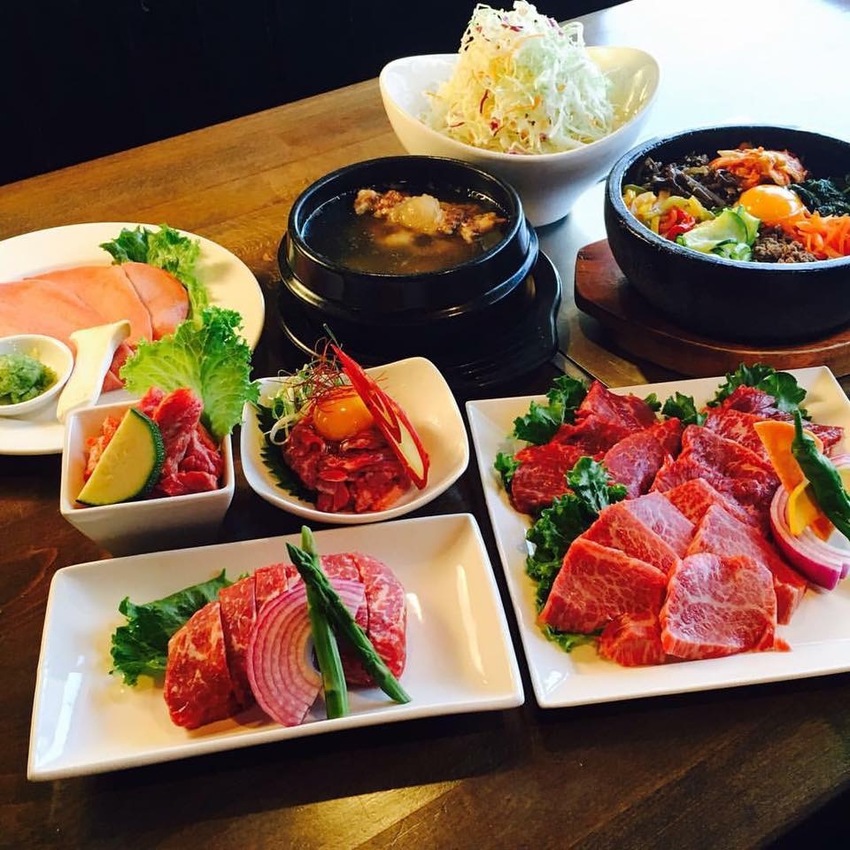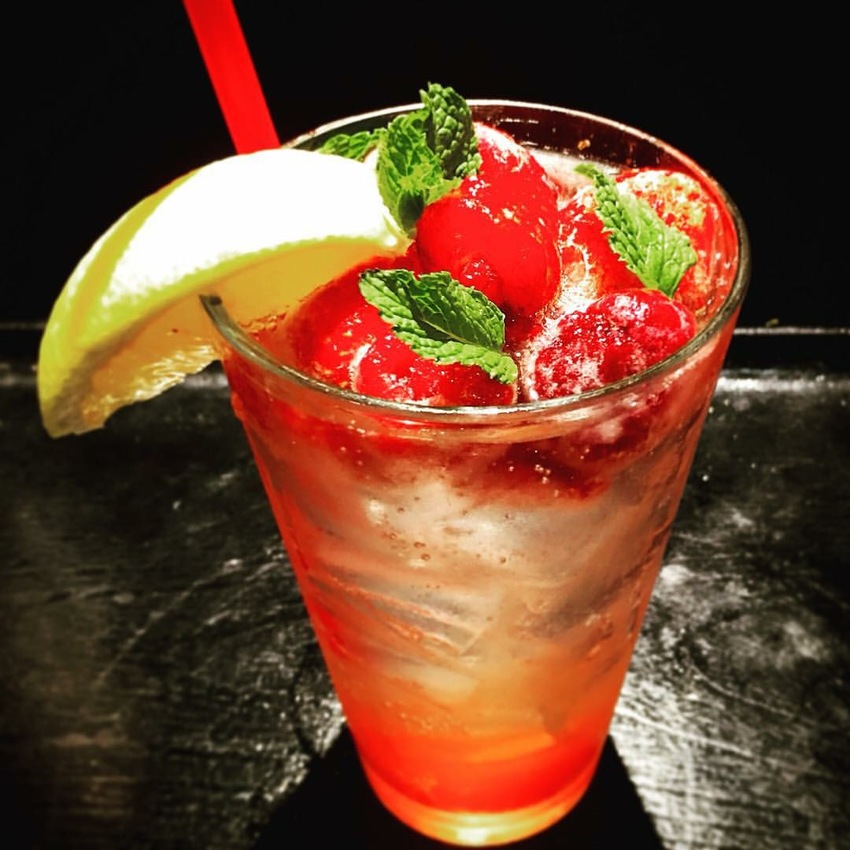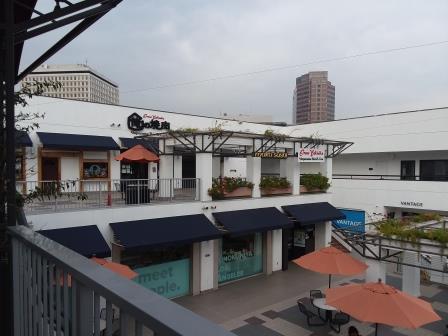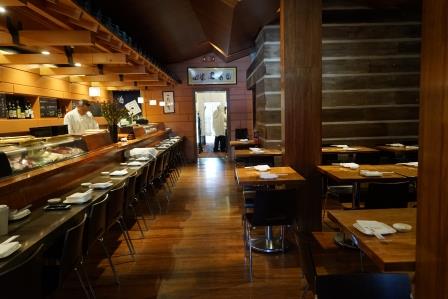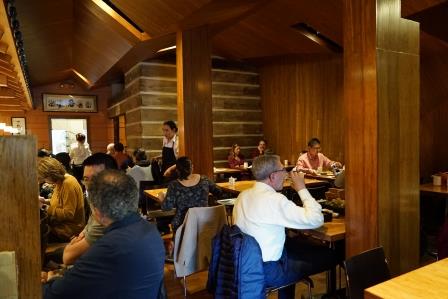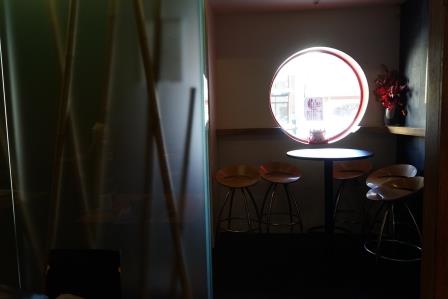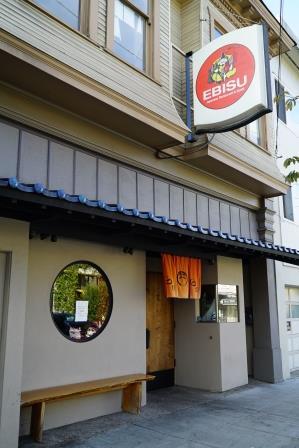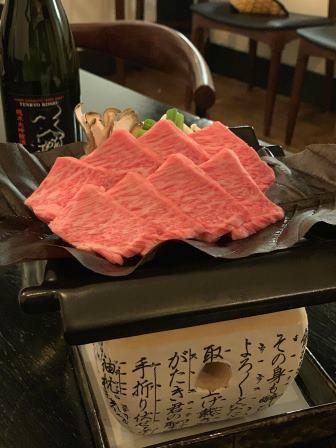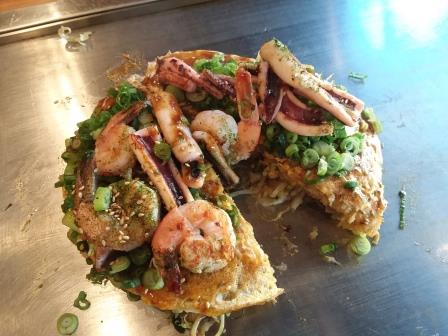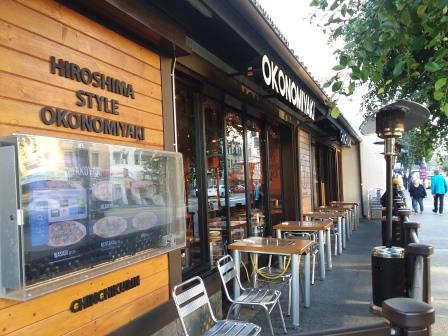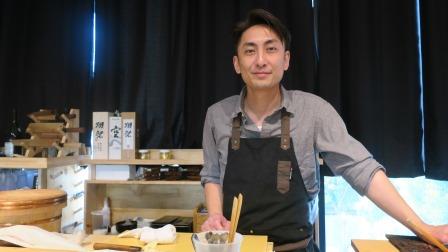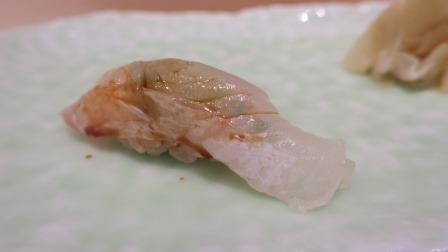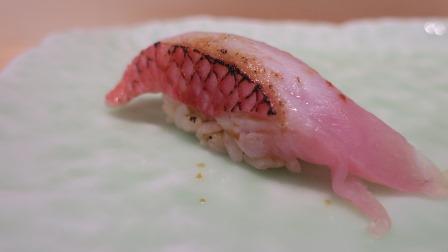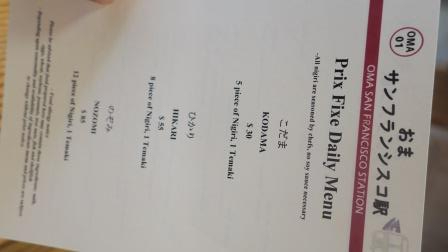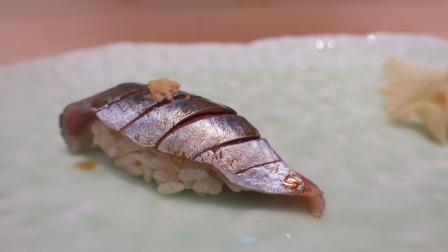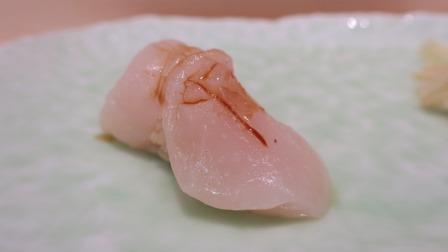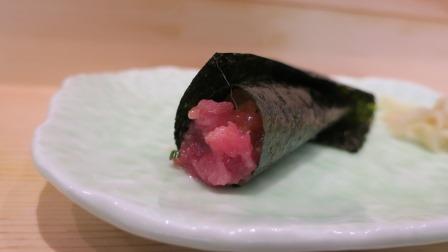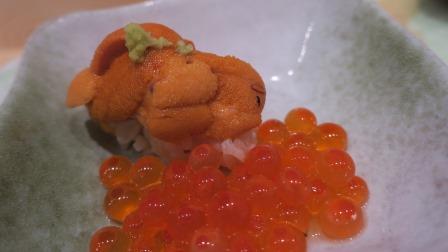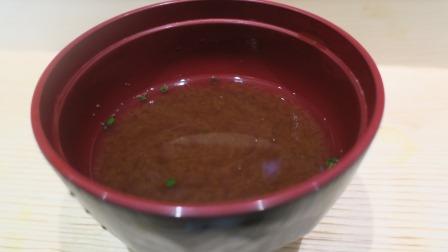Oreno Yakiniku Japanese Bar-B-Cue -Bringing in customers with the signature menu item, KOBE SPECIAL, and offering happy hour twice a day.-
By Keiko Fukuda
A Japanese style yakiniku restaurant “Oreno Yakiniku” is located on the third floor of the Weller Court, a shopping mall in Little Tokyo. This place gets especially busy during lunch hours and also while some event is being held nearby. During lunch hours, neighboring Government office workers and other business people swarm to this restaurant to get the lunch specials of this restaurant. Whenever some Japan-themed event is held in the downtown area, such as the Anime Expo, a huge number of people would move into Little Tokyo from the event hall.
This restaurant shows different faces between lunch and dinner. First of all, the reason for the popularity of lunch time is the richness of their menu, and the reasonable pricing. As for the lunch menu variety, aside from the Yakiniku lunch, they also offer as many as nearly 30 or so different items. The grilled miso-marinated black cod, fried salmon, fried prawn, kurobuta shoga-yaki, tonkatsu, jidori karaage, curry, and donburis are some of those items, and most of them are under $15. The ishiyaki bibimbpa is only $9.95. The pricing is very reasonable considering its good location.
For dinner time, on the other hand, a yakiniku set menu called “Snake River Farms Kiwami”, in which a high-quality brand beef is used, is very popular. The Snake River Farms Kiwami is the highest-quality USDA certified beef, and is a relative of Kuroge Japanese beef.
“The beef we use is equal or above prime grade. You can enjoy true high-class delicious beef, which tastes different from all-you-can-eat type of beef,” says the Assistant Manager, Sachie Ebata.
The most popular item among their yakiniku set menu items is the KOBE SPECIAL. As the name suggests, all the meats in the set, yukke, tongue, ribeye, short rib, outside skirt, chuck flap, and ox tail soup are Kobe beef. In addition, the set includes an ishiyaki bibimpa, a cabbage salad, and a dessert. This special course, which is satisfactorily enjoyable with its generous volume and variety, is $135. The reason for having continuous repeating customers seems to be due to not only the meat quality, but also the variety of meat parts you can taste. Thus mentioned, the average lunch time spending for a single customer is between 10 and 15 dollars, whereas it is between 30 and 50 dollars for dinner time, which is a big difference. In order to attract more customers for dinner hours, this restaurant takes on an attractive strategy, which is to offer happy hour twice a day.
The first happy hour is from the opening time (different depending on the day: either 5pm or 5:30pm) to 7pm, during which they offer a drastic discount for Asahi draft beer at $1.99 (instead of the regular price at $5.50), $1 off on cold or hot sake, and $2 off on a glass of wine. Moreover, they offer a 20% discount on a bottle of shochu, and 15% off on a portion of the meat menu items.
The second happy hour is between 8 and 9pm. The discount rates on the hot sake, cold sake, and a glass of wine are the same as the first happy hour; however, Sapporo draft beer is offered surprisingly at only 99 cents. But, there is a catch. This special discount applies only to the customer who ordered more than $10 worth of food or drinks for one person.
Before this restaurant opened 6 years ago, the Assistant Manager, Ebata, was working for EBISU, another Japanese restaurant in Little Tokyo. Both Oreno Yakiniku and EBISU are under the same company, Bishamon Group, which has developed more than 10 restaurants in the Los Angeles area. The Bishamon Group is the pioneer which has brought back the vividness to Little Tokyo ever since its opening of the popular Daikokuya ramen restaurant on 1st street, which has been attracting a lot of customers of many ethnicities. Due to the construction rush of the nearby condominiums, the area has a problem which is the lack of parking places, and the parking charge hike, which is also affecting their ability to attract more customers. Despite the odds, they say that Oreno Yakiniku is committed to keep offering quality meat, and continuing the business based in Little Tokyo for the future.
看板メニューKOBE SPECIALと1日2回のハッピーアワーで集客
リトルトーキョーのショッピングモール、ウエラーコートの3階にある日本スタイルの焼肉レストラン「俺の焼肉」はランチタイムとイベント時期に特に賑わう。ランチタイムには隣接した官庁街からビジネスマンが同店のランチを目指して集まってくる。また、ダウンタウンでアニメエキスポといった日本をテーマにしたイベントが開催される期間には、イベント会場からリトルトーキョーに人々がそのまま大量に移動してくるという。
この店は昼と夜では違う顔を見せる。まず、ランチタイムが賑わう理由はメニューの豊富さとリーズナブルな料金だ。ランチメニューには、焼肉ランチを始めとして、銀だらの味噌焼き、サーモンフライ、海老フライや黒豚しょうが焼き、とんかつ、地鶏唐揚げ、カレーや丼まで30種類近くがずらりと並ぶ。ほとんどが15ドル以下、石焼ビビンバは$9.95と、場所を考えると非常に手頃な値段だ。
一方、ディナータイムには「スネイクリバーファーム極(きわみ)」という名前のブランド牛を使った、品質にこだわった焼肉セットが大人気。スネイクリバーファームの極は米国和牛協会の認定を受けた黒毛和種の血統を受け継ぐ最高級ブランドだ。
「肉はプライム以上のものを使用しています。食べ放題の肉とは一線を画す高級感のある美味しいお肉を楽しんでいただけます」と話すのは、同店のアシスタントマネージャーの江端さちえさん。
焼肉セットの一番人気はその名もKOBE SPECIAL。ユッケ、タン、リブアイ、ショートリブ、アウトサイドスカート、チャックフラップ、オックステールスープとすべてが神戸ビーフ尽くしで、これに石焼ビビンバとキャベツサラダにデザートが加わる。十分なボリュームとバラエティー豊かな肉が楽しめるスペシャルメニューのお値段は135ドル。肉の品質だけでなく、様々な部位を味わえることがリピーター続出の理由のようだ。
このように、ランチタイムは客の平均単価が10ドルから15ドルに対し、ディナーには30ドルから50ドルほどとギャップがある。そこでディナータイムにより顧客を惹きつける、魅力的な仕掛け作りという意味で、同店では二度のハッピーアワーを毎日実施している。
まず第一弾はオープン(曜日によって異なる。午後5時から5時半)から午後7時までで、アサヒの生ビールが1ドル99セント(通常5ドル50セント)と破格になるのをはじめ、冷酒や熱燗は1ドルオフ、グラスワインは2ドルオフになる。さらに焼酎のボトルは20%オフ。ミートメニューの一部も15%オフで提供される。
そしてハッピーアワーの第二弾は午後8時から9時まで。熱燗、冷酒、グラスワインの値段は第一弾と同じだが、サッポロの生ビールがなんと99セント。ただし、一人10ドル以上注文した顧客のみが対象となる。
6年前にこの店がオープンする前、アシスタントマネージャーの江端さんは同じくリトルトーキョー内にある日本食レストランのEBISUに勤務していた。この俺の焼肉もEBISUも、ロサンゼルス界隈に10数店舗を展開する毘沙門グループの傘下にある。毘沙門グループはリトルトーキョーのファースト・ストリートにラーメン店大黒家を出してから、人種を問わず顧客を集めたことで、この地域に活気を取り戻した立役者だ。昨今はコンドミニアムの建設ラッシュで駐車場の数が減ったこともあり、駐車場代が高いことが集客のネックになってはいるが、俺の焼肉はこれからも良質の肉にこだわり、リトルトーキョーを舞台に営業を続けていく所存だということだ。
Oreno Yakiniku
123 S Onizuka St., Ste 308 Los Angeles CA 90012
(213)680-0829
http://www.oreno-yakiniku.com/
Tue.-Sun. 11:30am-2:00pm
Tue.-Thu. 5:30pm-10:00pm
Fri, 5:30pm-11:00pm
Sat. 5:00pm-11:00pm
Sun.5:00pm-10:00pm
Monday Closed
A Japanese style yakiniku restaurant “Oreno Yakiniku” is located on the third floor of the Weller Court, a shopping mall in Little Tokyo. This place gets especially busy during lunch hours and also while some event is being held nearby. During lunch hours, neighboring Government office workers and other business people swarm to this restaurant to get the lunch specials of this restaurant. Whenever some Japan-themed event is held in the downtown area, such as the Anime Expo, a huge number of people would move into Little Tokyo from the event hall.
This restaurant shows different faces between lunch and dinner. First of all, the reason for the popularity of lunch time is the richness of their menu, and the reasonable pricing. As for the lunch menu variety, aside from the Yakiniku lunch, they also offer as many as nearly 30 or so different items. The grilled miso-marinated black cod, fried salmon, fried prawn, kurobuta shoga-yaki, tonkatsu, jidori karaage, curry, and donburis are some of those items, and most of them are under $15. The ishiyaki bibimbpa is only $9.95. The pricing is very reasonable considering its good location.
For dinner time, on the other hand, a yakiniku set menu called “Snake River Farms Kiwami”, in which a high-quality brand beef is used, is very popular. The Snake River Farms Kiwami is the highest-quality USDA certified beef, and is a relative of Kuroge Japanese beef.
“The beef we use is equal or above prime grade. You can enjoy true high-class delicious beef, which tastes different from all-you-can-eat type of beef,” says the Assistant Manager, Sachie Ebata.
The most popular item among their yakiniku set menu items is the KOBE SPECIAL. As the name suggests, all the meats in the set, yukke, tongue, ribeye, short rib, outside skirt, chuck flap, and ox tail soup are Kobe beef. In addition, the set includes an ishiyaki bibimpa, a cabbage salad, and a dessert. This special course, which is satisfactorily enjoyable with its generous volume and variety, is $135. The reason for having continuous repeating customers seems to be due to not only the meat quality, but also the variety of meat parts you can taste. Thus mentioned, the average lunch time spending for a single customer is between 10 and 15 dollars, whereas it is between 30 and 50 dollars for dinner time, which is a big difference. In order to attract more customers for dinner hours, this restaurant takes on an attractive strategy, which is to offer happy hour twice a day.
The first happy hour is from the opening time (different depending on the day: either 5pm or 5:30pm) to 7pm, during which they offer a drastic discount for Asahi draft beer at $1.99 (instead of the regular price at $5.50), $1 off on cold or hot sake, and $2 off on a glass of wine. Moreover, they offer a 20% discount on a bottle of shochu, and 15% off on a portion of the meat menu items.
The second happy hour is between 8 and 9pm. The discount rates on the hot sake, cold sake, and a glass of wine are the same as the first happy hour; however, Sapporo draft beer is offered surprisingly at only 99 cents. But, there is a catch. This special discount applies only to the customer who ordered more than $10 worth of food or drinks for one person.
Before this restaurant opened 6 years ago, the Assistant Manager, Ebata, was working for EBISU, another Japanese restaurant in Little Tokyo. Both Oreno Yakiniku and EBISU are under the same company, Bishamon Group, which has developed more than 10 restaurants in the Los Angeles area. The Bishamon Group is the pioneer which has brought back the vividness to Little Tokyo ever since its opening of the popular Daikokuya ramen restaurant on 1st street, which has been attracting a lot of customers of many ethnicities. Due to the construction rush of the nearby condominiums, the area has a problem which is the lack of parking places, and the parking charge hike, which is also affecting their ability to attract more customers. Despite the odds, they say that Oreno Yakiniku is committed to keep offering quality meat, and continuing the business based in Little Tokyo for the future.
看板メニューKOBE SPECIALと1日2回のハッピーアワーで集客
リトルトーキョーのショッピングモール、ウエラーコートの3階にある日本スタイルの焼肉レストラン「俺の焼肉」はランチタイムとイベント時期に特に賑わう。ランチタイムには隣接した官庁街からビジネスマンが同店のランチを目指して集まってくる。また、ダウンタウンでアニメエキスポといった日本をテーマにしたイベントが開催される期間には、イベント会場からリトルトーキョーに人々がそのまま大量に移動してくるという。
この店は昼と夜では違う顔を見せる。まず、ランチタイムが賑わう理由はメニューの豊富さとリーズナブルな料金だ。ランチメニューには、焼肉ランチを始めとして、銀だらの味噌焼き、サーモンフライ、海老フライや黒豚しょうが焼き、とんかつ、地鶏唐揚げ、カレーや丼まで30種類近くがずらりと並ぶ。ほとんどが15ドル以下、石焼ビビンバは$9.95と、場所を考えると非常に手頃な値段だ。
一方、ディナータイムには「スネイクリバーファーム極(きわみ)」という名前のブランド牛を使った、品質にこだわった焼肉セットが大人気。スネイクリバーファームの極は米国和牛協会の認定を受けた黒毛和種の血統を受け継ぐ最高級ブランドだ。
「肉はプライム以上のものを使用しています。食べ放題の肉とは一線を画す高級感のある美味しいお肉を楽しんでいただけます」と話すのは、同店のアシスタントマネージャーの江端さちえさん。
焼肉セットの一番人気はその名もKOBE SPECIAL。ユッケ、タン、リブアイ、ショートリブ、アウトサイドスカート、チャックフラップ、オックステールスープとすべてが神戸ビーフ尽くしで、これに石焼ビビンバとキャベツサラダにデザートが加わる。十分なボリュームとバラエティー豊かな肉が楽しめるスペシャルメニューのお値段は135ドル。肉の品質だけでなく、様々な部位を味わえることがリピーター続出の理由のようだ。
このように、ランチタイムは客の平均単価が10ドルから15ドルに対し、ディナーには30ドルから50ドルほどとギャップがある。そこでディナータイムにより顧客を惹きつける、魅力的な仕掛け作りという意味で、同店では二度のハッピーアワーを毎日実施している。
まず第一弾はオープン(曜日によって異なる。午後5時から5時半)から午後7時までで、アサヒの生ビールが1ドル99セント(通常5ドル50セント)と破格になるのをはじめ、冷酒や熱燗は1ドルオフ、グラスワインは2ドルオフになる。さらに焼酎のボトルは20%オフ。ミートメニューの一部も15%オフで提供される。
そしてハッピーアワーの第二弾は午後8時から9時まで。熱燗、冷酒、グラスワインの値段は第一弾と同じだが、サッポロの生ビールがなんと99セント。ただし、一人10ドル以上注文した顧客のみが対象となる。
6年前にこの店がオープンする前、アシスタントマネージャーの江端さんは同じくリトルトーキョー内にある日本食レストランのEBISUに勤務していた。この俺の焼肉もEBISUも、ロサンゼルス界隈に10数店舗を展開する毘沙門グループの傘下にある。毘沙門グループはリトルトーキョーのファースト・ストリートにラーメン店大黒家を出してから、人種を問わず顧客を集めたことで、この地域に活気を取り戻した立役者だ。昨今はコンドミニアムの建設ラッシュで駐車場の数が減ったこともあり、駐車場代が高いことが集客のネックになってはいるが、俺の焼肉はこれからも良質の肉にこだわり、リトルトーキョーを舞台に営業を続けていく所存だということだ。
Oreno Yakiniku
123 S Onizuka St., Ste 308 Los Angeles CA 90012
(213)680-0829
http://www.oreno-yakiniku.com/
Tue.-Sun. 11:30am-2:00pm
Tue.-Thu. 5:30pm-10:00pm
Fri, 5:30pm-11:00pm
Sat. 5:00pm-11:00pm
Sun.5:00pm-10:00pm
Monday Closed








